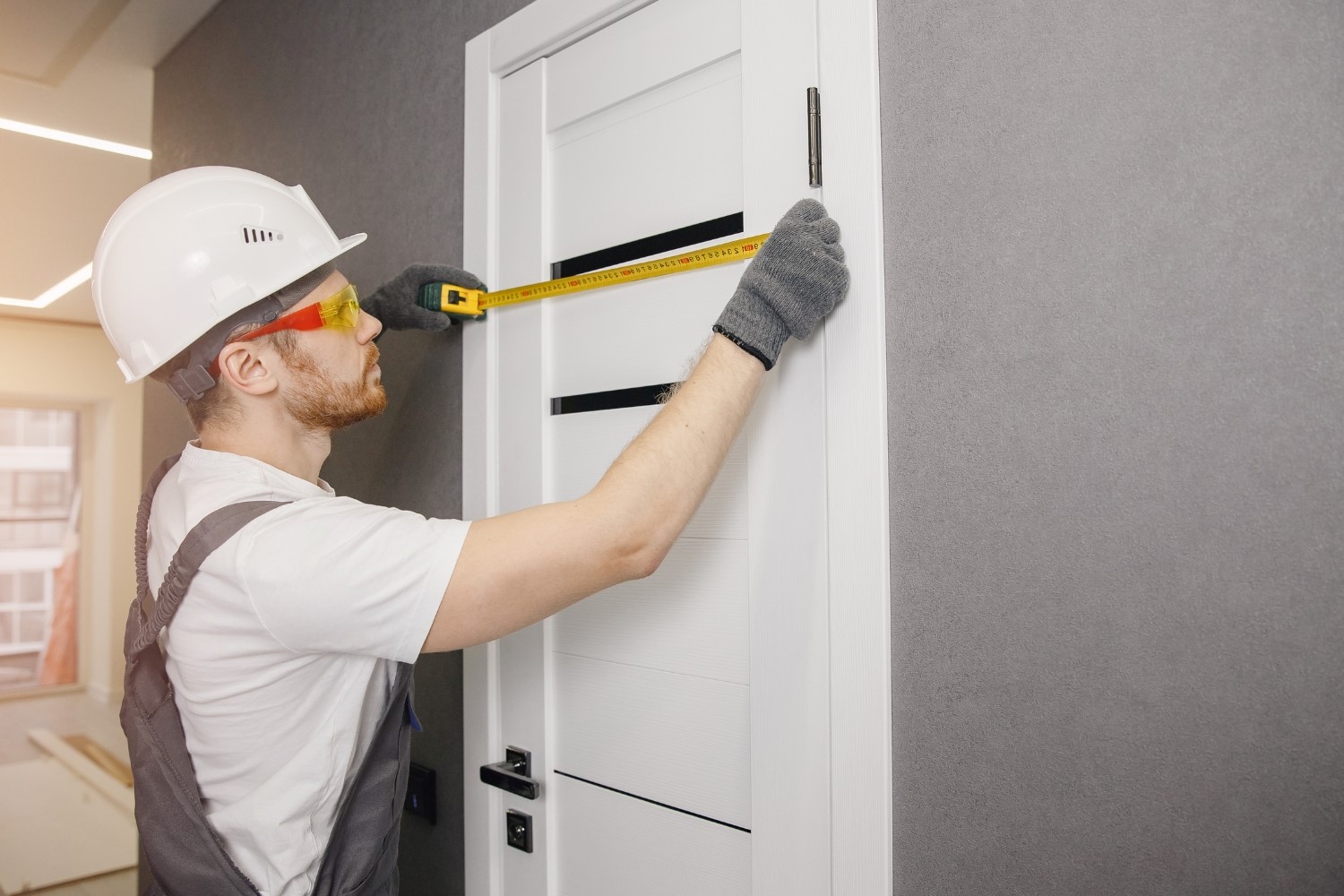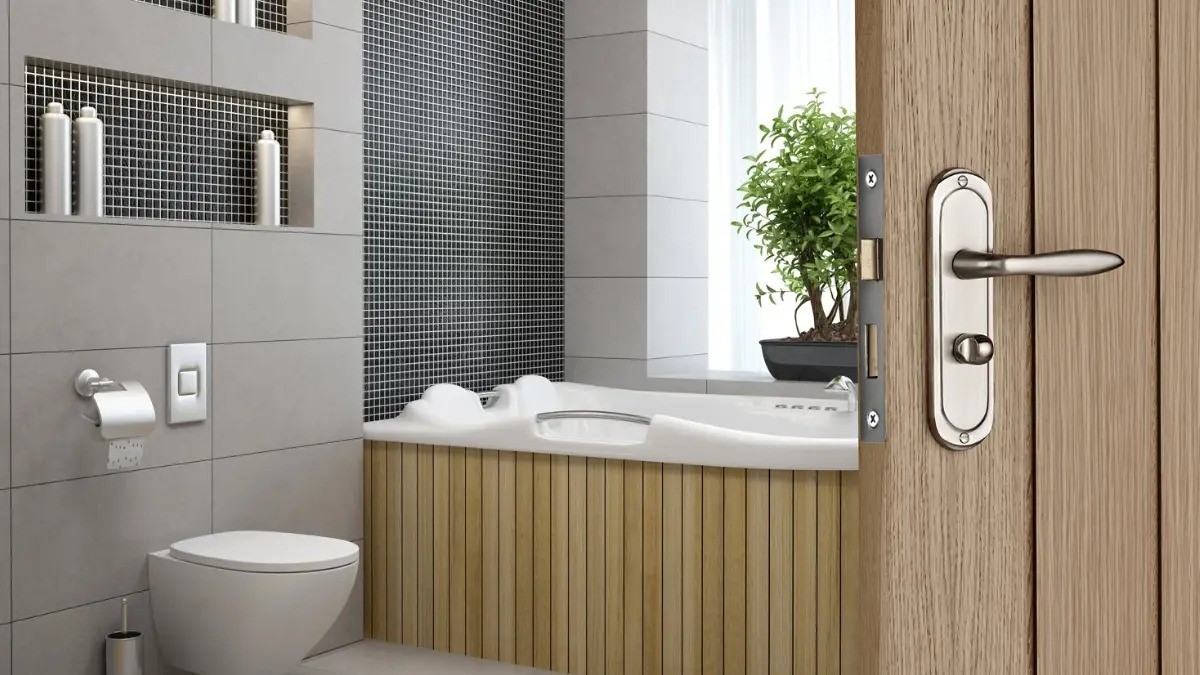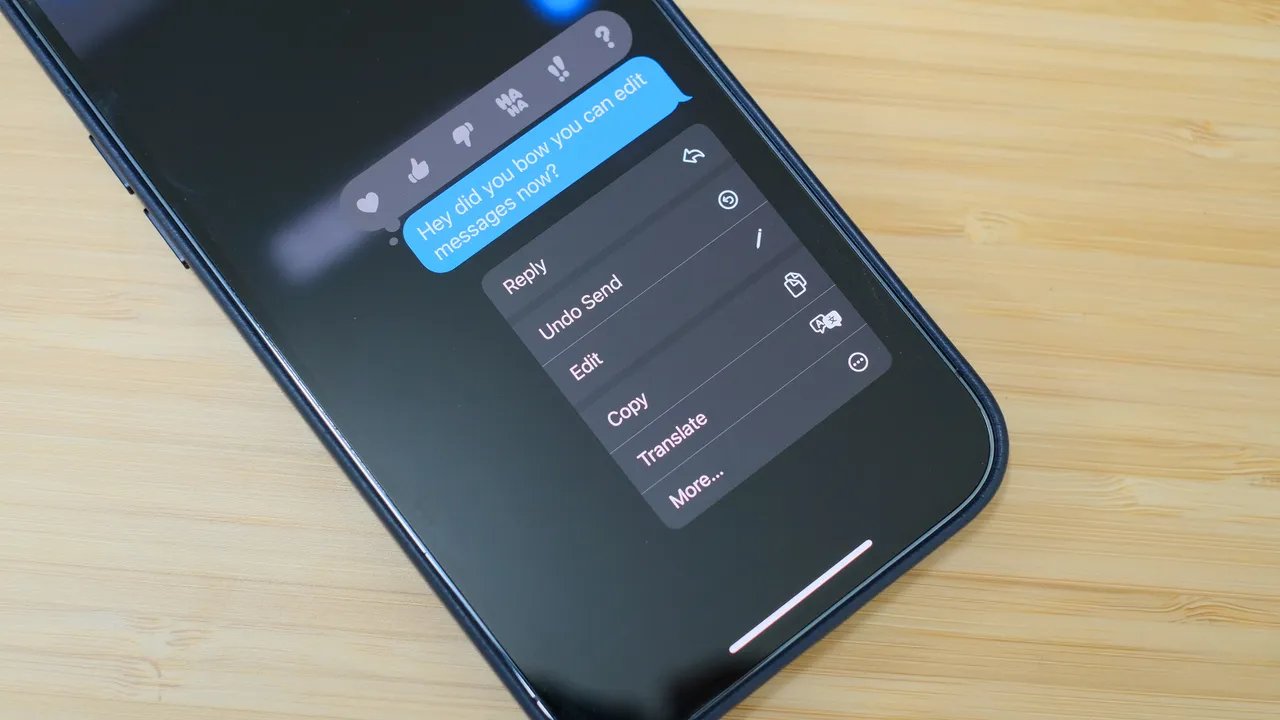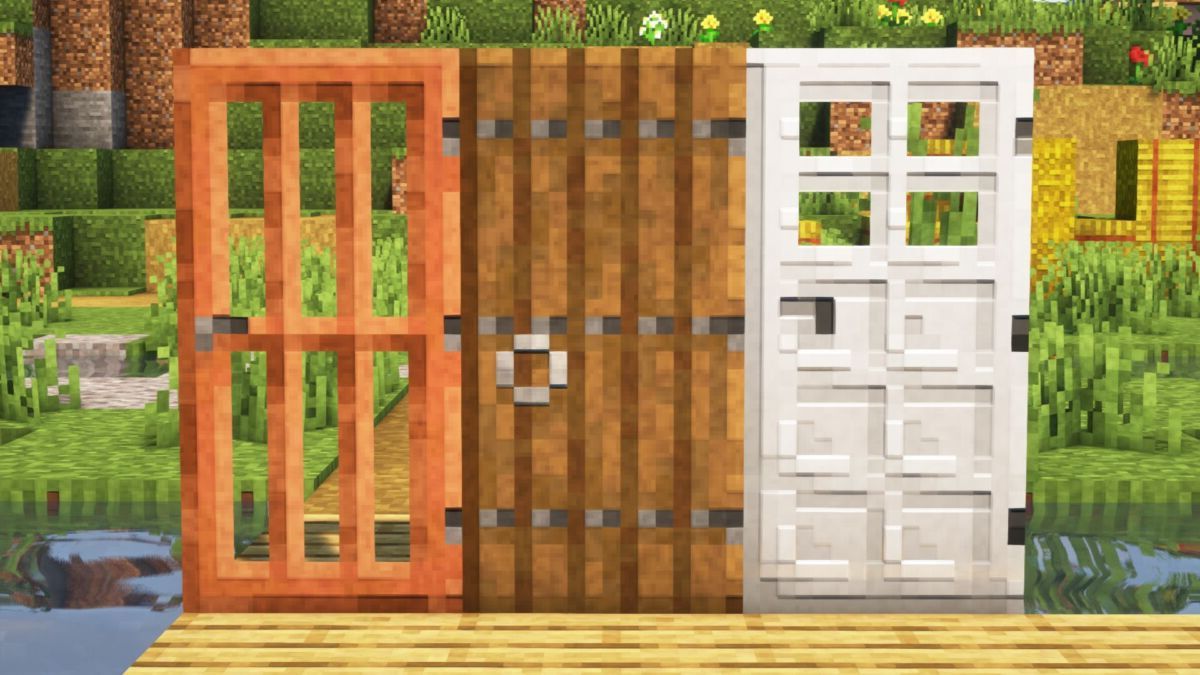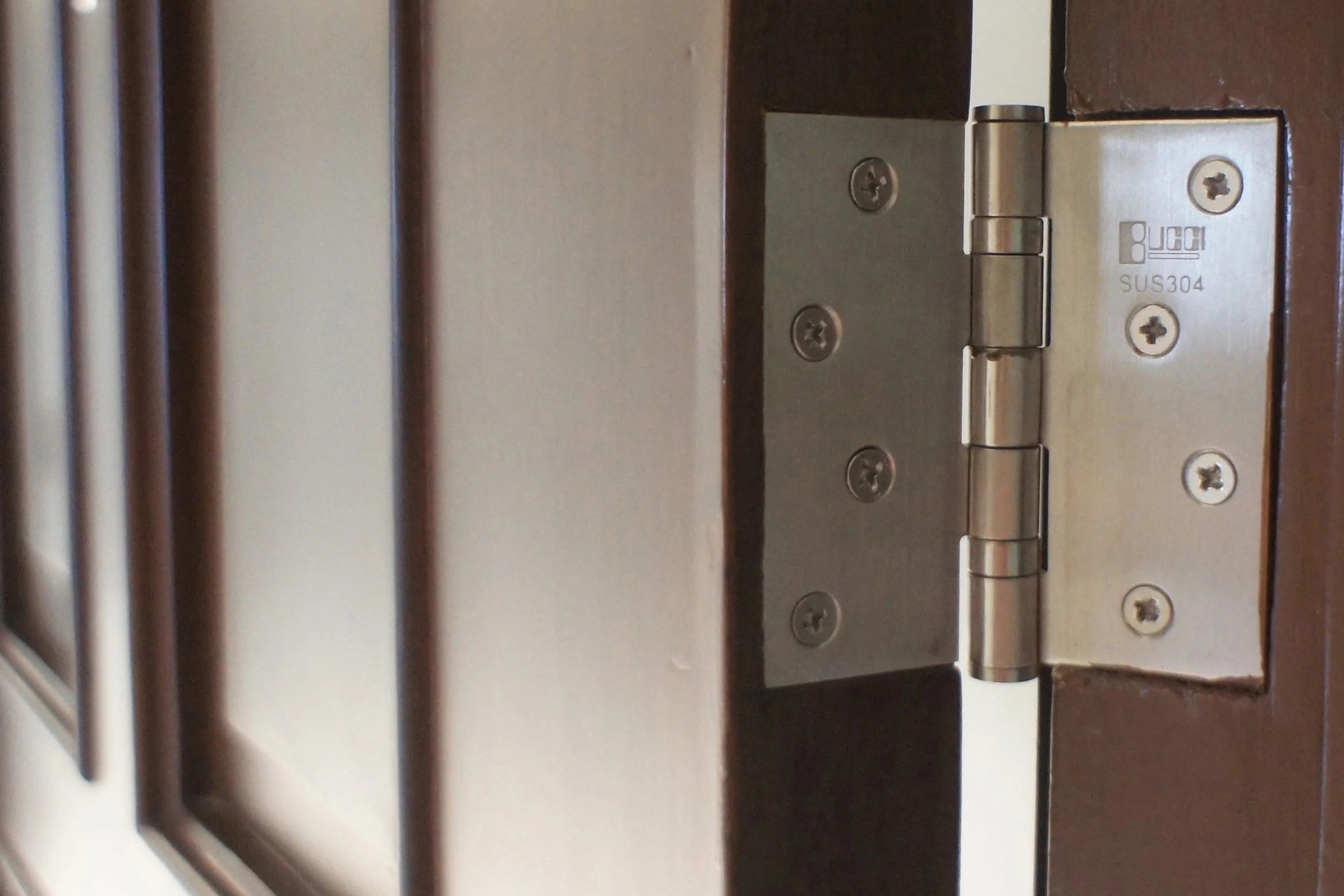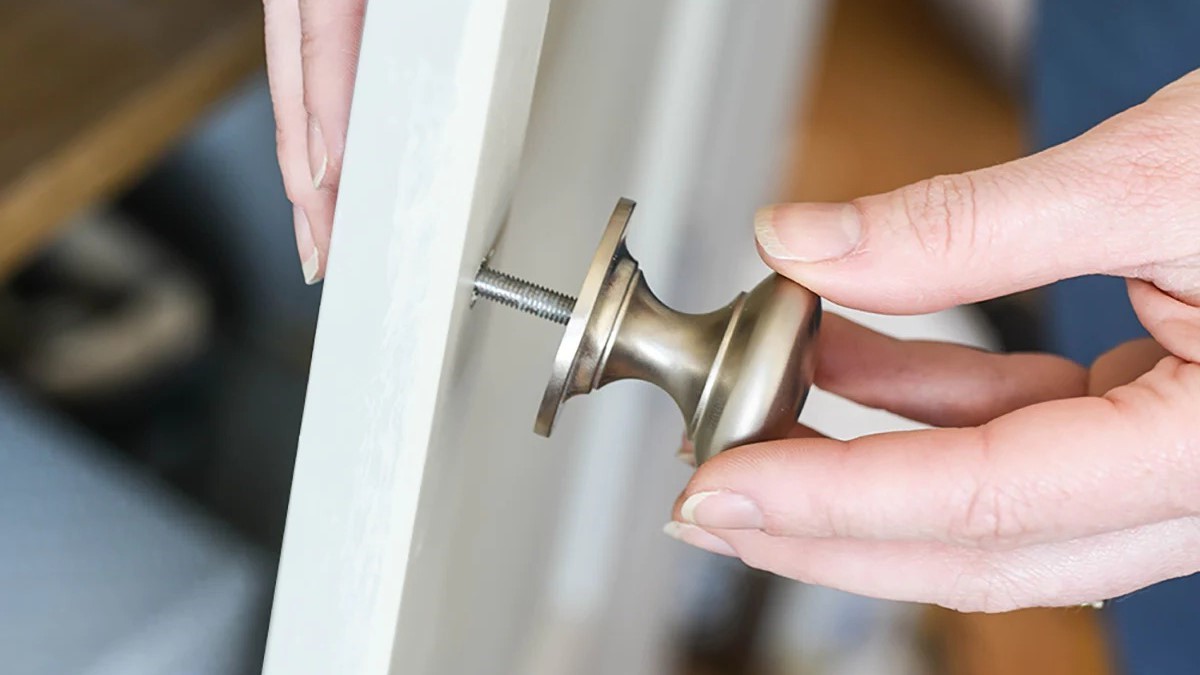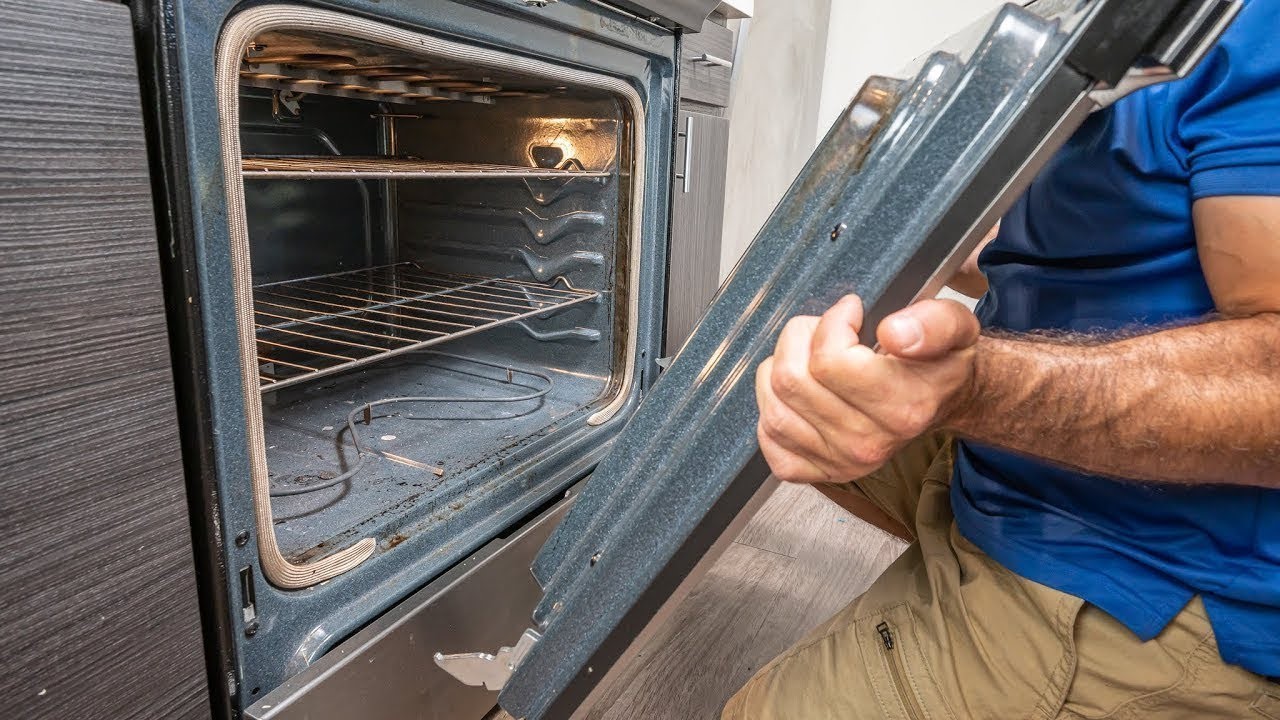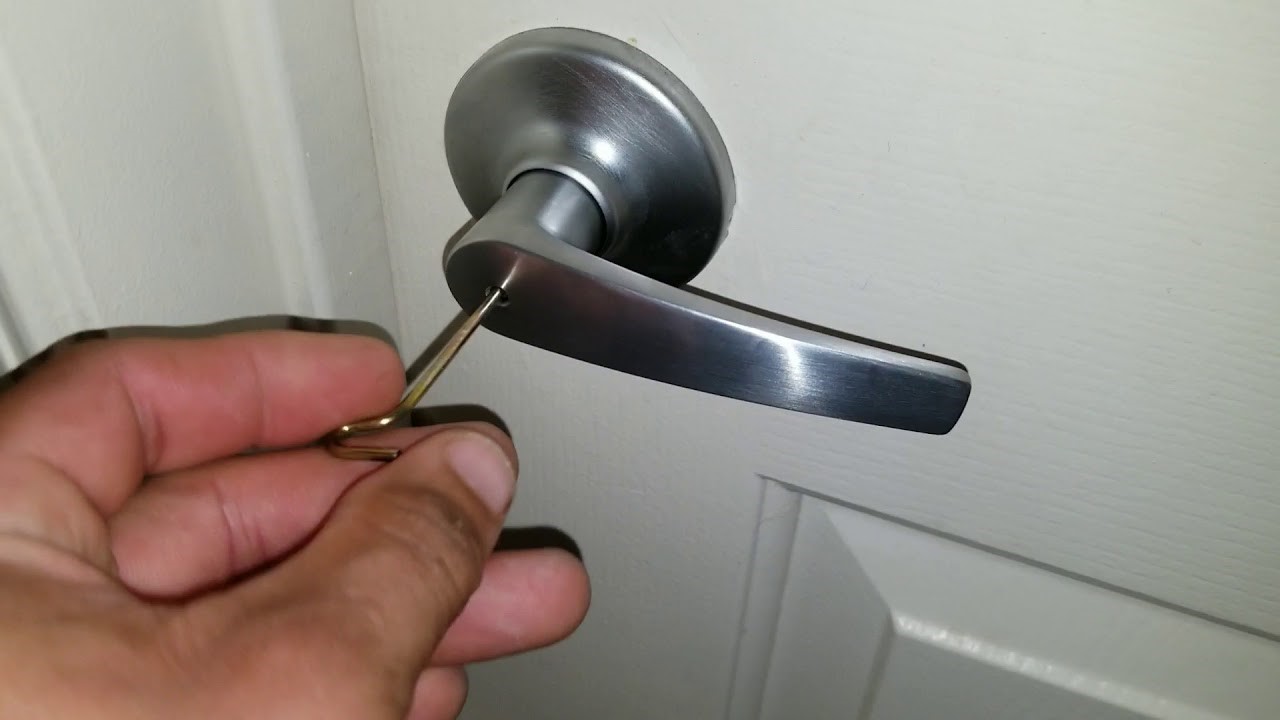Home>Home and Garden>How To Open A Locked Door
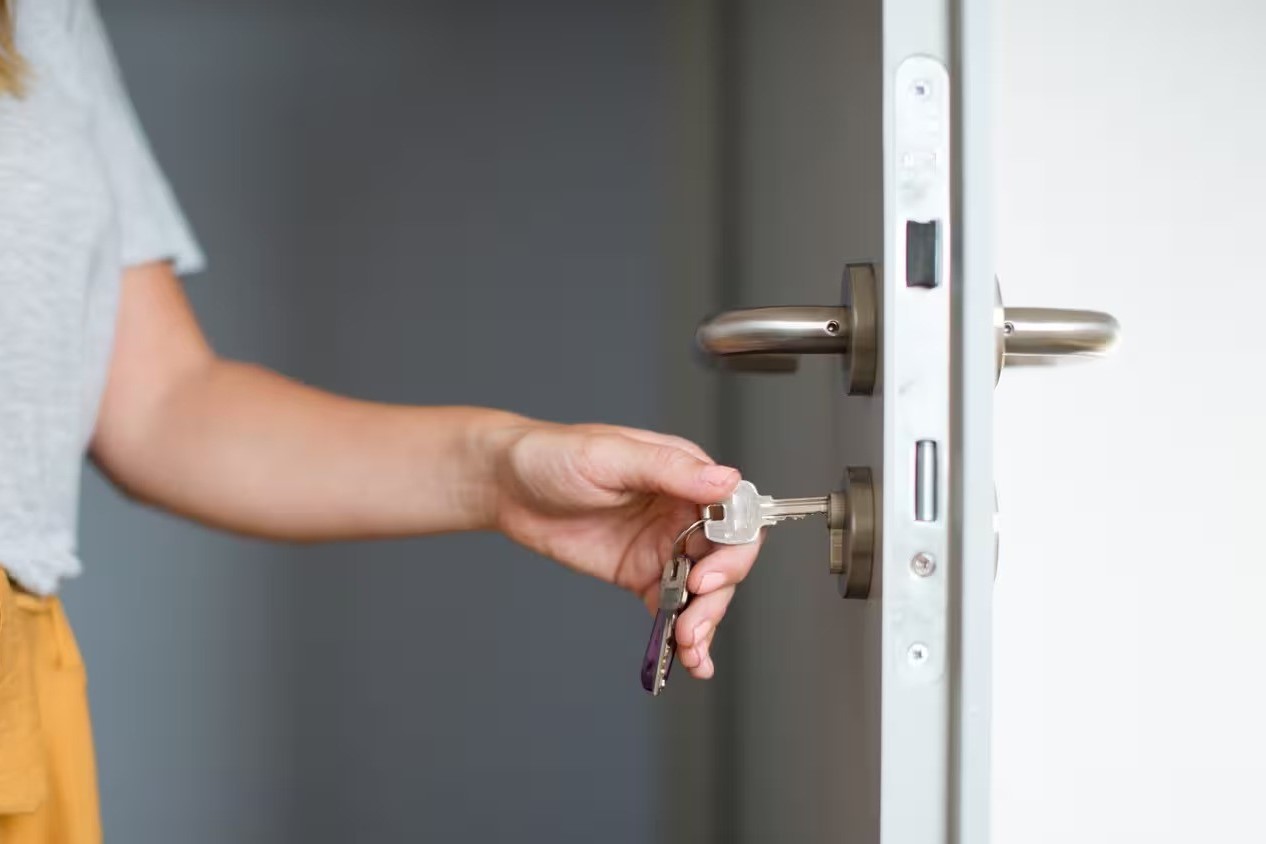

Home and Garden
How To Open A Locked Door
Published: March 5, 2024
Learn how to open a locked door with these effective home and garden tips. Discover simple solutions for gaining access to locked doors. Unlock the door with ease!
(Many of the links in this article redirect to a specific reviewed product. Your purchase of these products through affiliate links helps to generate commission for Noodls.com, at no extra cost. Learn more)
Table of Contents
Introduction
Finding yourself locked out of a room or a house can be a frustrating and stressful experience. Whether it's due to a misplaced key, a malfunctioning lock, or an accidental door closure, the feeling of being unable to access a space can be disheartening. However, before giving in to panic or frustration, there are several methods you can try to open a locked door on your own. In this article, we will explore various techniques for unlocking a door without a key, using common household items and simple tools. From using a credit card or plastic card to employing a bobby pin or paperclip, and even resorting to a screwdriver or butter knife, we will cover a range of methods that may help you regain access to the locked space. Additionally, we will discuss the option of seeking professional assistance from a locksmith, providing guidance on when it may be necessary to call in a professional to resolve the situation. Whether you're dealing with a locked bedroom door, a stuck bathroom lock, or a jammed front door, this article aims to equip you with practical knowledge and solutions to tackle the challenge of opening a locked door effectively and efficiently. So, if you ever find yourself in the predicament of being locked out, read on to discover the potential methods and steps to take in order to regain access to the locked space.
Read more: How To Manually Open Garage Door
Assessing the Situation
Before attempting to open a locked door, it's crucial to carefully assess the situation to determine the type of lock and the potential methods that may be effective in unlocking it. Start by examining the door and the surrounding area. Take note of the type of lock installed, whether it's a traditional key-operated lock, a privacy lock with a small hole on the knob, or a deadbolt. Understanding the specific lock mechanism will guide your approach in attempting to unlock the door.
Next, consider the reason behind the lockout. Was the door closed accidentally, or is there a malfunction with the lock? Assess whether there are any alternative entry points or windows that could provide access to the locked space. Additionally, evaluate the urgency of the situation. If the door leads to a room with essential items or if there are safety concerns, it may be necessary to expedite the unlocking process.
Furthermore, take stock of the available resources and tools. Look for items that could potentially aid in unlocking the door, such as a credit card, plastic card, bobby pin, paperclip, screwdriver, or butter knife. Assessing the tools at your disposal will help determine the most suitable method to employ.
Lastly, consider the potential consequences of attempting to unlock the door. Evaluate the risk of causing damage to the lock, the door, or the surrounding area. Balancing the urgency of gaining access with the potential risks involved will inform your decision-making process.
By thoroughly assessing the situation, you can gain a clearer understanding of the lock type, the available resources, and the urgency of the lockout. This assessment will serve as a foundation for determining the most appropriate method to employ in opening the locked door, increasing the likelihood of a successful outcome while minimizing potential risks and complications.
Using a Credit Card or Plastic Card
When faced with a locked door and the absence of a key, utilizing a credit card or a plastic card can be a viable method to attempt to gain entry. This technique, often associated with older spring latch locks, involves manipulating the door latch by sliding a flexible card between the door and the doorframe. While this method may not be effective for all types of locks, it has been known to work on certain spring latch systems, particularly those found in interior doors.
To begin, select a card with some flexibility, such as a credit card, library card, or a laminated card. While it's important to avoid using cards that are essential for financial transactions, an old or expired card can serve the purpose effectively. Hold the card perpendicular to the door, inserting it between the door and the frame at the point where the latch is located. The edge of the card should be positioned against the latch, and with a slight angle, attempt to push and wiggle the card between the latch and the doorframe.
As you apply pressure with the card, simultaneously begin to bend and flex the card away from the door, aiming to push the latch back into the door. This action mimics the motion of the latch being retracted when the door handle is turned. With persistence and careful maneuvering, there is a possibility of the latch releasing and the door opening.
It's important to note that this method may not be effective on more secure deadbolt locks or newer lock systems. Additionally, there is a risk of damaging the card during the process, so it's advisable to use a card that is no longer needed. Furthermore, this technique should only be employed in situations where there is a genuine need to gain access to the locked space, and it's essential to consider the potential consequences and legal implications of attempting to unlock a door without proper authorization.
In summary, while using a credit card or plastic card to open a locked door may be a feasible option for certain types of locks, it's essential to approach this method with caution and discretion. By understanding the limitations and potential risks associated with this technique, individuals can make informed decisions when faced with the challenge of gaining entry to a locked space without a key.
Using a Bobby Pin or Paperclip
When confronted with a locked door and the absence of a key, employing a bobby pin or paperclip as makeshift lock-picking tools can offer a potential solution. This method, often associated with simple spring locks or privacy locks with a small hole on the knob, involves manipulating the internal components of the lock to disengage the mechanism and release the latch. While it's important to approach this technique with caution and respect for legal considerations, understanding the basic principles of lock-picking can provide valuable insight into attempting to open a locked door without a key.
To begin, select a bobby pin or straighten out a paperclip to create a simple yet effective lock-picking tool. If using a paperclip, bend it to form a straight, rigid tool with a small hook at one end. This hook will serve as the picking end, while the opposite end can act as a handle for maneuvering the tool. For a bobby pin, remove the plastic tips and unfold the pin to create a similar hook-shaped end for picking.
Next, insert the hooked end of the bobby pin or paperclip into the keyhole or the small hole on the knob, applying gentle pressure to the pins or tumblers within the lock. With a subtle upward or downward motion, carefully manipulate the pins while simultaneously applying slight rotational pressure to the tool. The goal is to mimic the action of a key, aligning the pins to the shear line within the lock cylinder and creating a momentary separation between the driver pins and the key pins.
As you continue to apply delicate pressure and maneuver the tool, there is a possibility of the lock's internal components aligning and the cylinder turning, ultimately releasing the latch and allowing the door to open. It's important to exercise patience and precision during this process, as excessive force or abrupt movements may result in the tool breaking or the lock becoming damaged.
It's crucial to note that lock-picking should only be attempted on locks for which you have legal permission to manipulate, such as those on your own property. Engaging in lock-picking without proper authorization can have legal implications and should be approached with the utmost discretion and respect for the law.
In summary, utilizing a bobby pin or paperclip as improvised lock-picking tools presents a potential method for opening certain types of locks without a key. By understanding the fundamental principles of lock-picking and exercising caution and legal awareness, individuals may consider this technique as a last resort for regaining access to a locked space.
Using a Screwdriver or Butter Knife
When faced with a locked door and the absence of a key, resorting to a screwdriver or a butter knife as makeshift tools for unlocking the door can offer a potential solution. This method, often associated with simple interior locks or privacy locks, involves manipulating the lock mechanism to disengage the latch and gain entry to the locked space.
To begin, select a flathead screwdriver or a butter knife with a thin, flat blade. The goal is to utilize the tool to exert pressure on the latch or the lock mechanism, aiming to release the door and allow it to open. It's important to exercise caution and precision during this process to avoid damaging the lock or the door.
Insert the flathead screwdriver or the thin blade of the butter knife into the gap between the door and the doorframe, positioning it adjacent to the latch. Apply gentle pressure to the tool, directing it toward the latch while simultaneously attempting to retract or push the latch back into the door. With careful maneuvering and persistence, there is a possibility of the latch releasing and the door unlocking.
It's crucial to note that this method may not be effective for all types of locks, particularly those with more advanced security features or deadbolts. Additionally, there is a risk of causing damage to the lock or the door if excessive force is applied or if the tool is not used with precision.
Furthermore, it's essential to approach this technique with discretion and respect for legal considerations. Attempting to unlock a door without proper authorization can have legal implications, and individuals should only employ this method on locks for which they have legal permission to manipulate, such as those on their own property.
In summary, utilizing a screwdriver or a butter knife as improvised tools for unlocking a door presents a potential method for gaining access to certain types of locks without a key. By understanding the limitations and potential risks associated with this technique, individuals can make informed decisions when faced with the challenge of opening a locked door without proper authorization.
Read more: How To Reset Door Lock Code
Calling a Professional Locksmith
When all attempts to open a locked door using household items or improvised tools have been exhausted, and the situation remains unresolved, seeking the expertise of a professional locksmith becomes a prudent course of action. A professional locksmith possesses the specialized knowledge, skills, and tools necessary to address a wide range of lock and key-related challenges, offering a reliable and efficient solution to the predicament of being locked out.
Upon contacting a reputable locksmith, it's essential to provide clear and accurate details regarding the nature of the lockout, the type of lock involved, and any pertinent information that may assist the locksmith in preparing for the service call. This may include the location of the locked door, the specific type of lock, and any relevant circumstances that led to the lockout.
When the locksmith arrives at the location, they will conduct a thorough assessment of the situation, examining the lock, the door, and any contributing factors that may impact the unlocking process. Leveraging their expertise, the locksmith will determine the most appropriate method to employ in opening the locked door, taking into account the type of lock, the condition of the lock, and any potential complications that may arise during the unlocking procedure.
Utilizing specialized tools and techniques, the locksmith will work diligently to resolve the lockout, aiming to unlock the door without causing damage to the lock or the surrounding area. Whether it involves picking the lock, rekeying the lock, or utilizing advanced lock manipulation methods, the locksmith's proficiency and experience enable them to navigate the complexities of the lock and devise a tailored solution to regain access to the locked space.
In addition to addressing lockouts, professional locksmiths offer a range of services, including lock installation, lock repair, key duplication, and security system maintenance. Their comprehensive expertise in locksmithing ensures that they can provide valuable insights and recommendations for enhancing the security and functionality of residential and commercial properties.
By engaging the services of a professional locksmith, individuals can benefit from a swift and effective resolution to the challenge of being locked out, while also gaining access to professional guidance on lock and key-related matters. Furthermore, the expertise and reliability of a professional locksmith offer peace of mind, knowing that the lockout situation will be handled with precision and professionalism, ultimately restoring access to the locked space in a secure and efficient manner.

